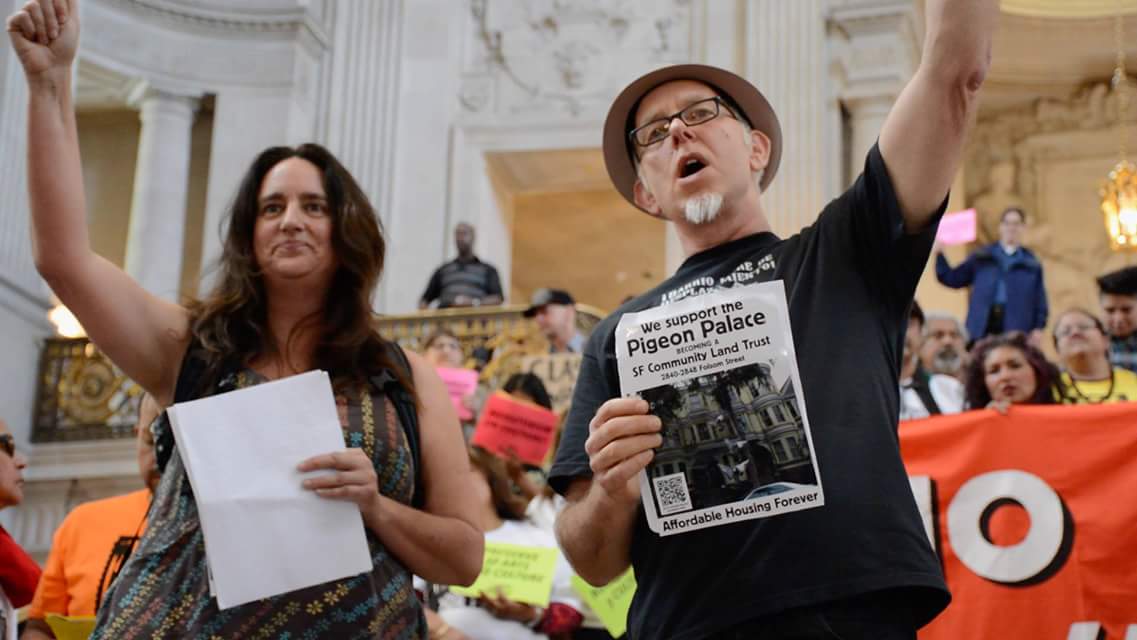Power is neutral. The question is, how can power over land be used in such a way that people who are at a political disadvantage—who are poor, members of racial, ethnic or religious minorities, very young or very old, or have a disability—benefit? How about those who cannot speak for themselves, like trees or rivers?
Having been born and raised in neighborhoods in Brooklyn and Queens, New York, I was familiar with community powerlessness. We had a city government on the other side of the East River that neglected its predominantly low-income or Black and Brown neighborhoods, or used them as places to warehouse human beings who had no place to live, as if they were garbage. In 1982 as the Greenpoint Hospital complex began the process of shutting down, a racially diverse coalition of Greenpoint/Williamsburg community groups—a senior center, a woman’s group, a public housing residents’ association, a nonprofit affordable housing developer, block associations, and even the volunteer ambulance corps—banded together as the Greenpoint Renaissance Enterprise Corporation (GREC) to come up with a redevelopment plan. The plan, which won broad-based support, included intergenerational affordable housing, a small shelter, a nursing home, a group medical practice, and a youth recreation center.
But overnight on Aug. 16, 1983, the city moved 40 homeless men into the main hospital building. By 1987, the population grew to 1,000. Any complaint to the city was dismissed as a NIMBY attack. As one member of GREC recalled to me, the community as a whole felt “stabbed in the back. When you think you’re negotiating in good faith, all along the city had its own agenda.”
When I moved to the Boston area, I saw what successful community control in a disinvested neighborhood looks like. The Dudley Street Neighborhood Initiative began as a grassroots planning process even more broad-based than GREC’s—children themselves came up with the design for a youth center—in their Roxbury neighborhood. The politics were more malleable, and DSNI won control of the land through eminent domain, forever preserved through a community land trust.
It was only later when I moved to the northern suburbs of Chicago that I learned that there was such a thing as too much community control of land.
Suburbs were created in the late 19th century to get away from the grime and teeming masses of the cities. Today, using a powerful tool enshrined in the Illinois Constitution called “Home Rule,” many communities can control their land through zoning, property tax levies, and municipal services. Before the Supreme Court invalidated racial covenants in 1948 with Shelley v. Kraemer and ultimately Congress passed the 1968 Fair Housing Act, the public and private sectors freely buttressed local racial and economic segregation.
But like any powerful tool, suburban power over land can be wielded to favor inclusion over exclusion, and enlightened suburban residents know this. In the early 2000s, the City of Highland Park, an affluent Chicago suburb, developed a menu of affordable housing tools such as inclusionary zoning, a tear down tax, an affordable housing fund, and a community land trust, following a public gathering and a study of housing needs and solutions.
In the Village of Wilmette, the people came together much like those in Greenpoint/Williamsburg and Roxbury with a “yes, in my back yard” agenda for Mallinckrodt, a 17-acre site with 450 trees and a historic brick school building. Just two years after Loyola University acquired the property from an order of nuns, it announced in October 2001 that it would sell it to a private McMansion developer. Since the underlying zoning was for single-family homes, the Village said it had no control over the sale. But residents rose up, from environmentalists to affordable housing advocates, to ultimately reclaim the site through a Park District bond referendum.
Today, the building is a mixed-income condominium and the surrounding land, a park. Indeed, it was Mallinckrodt that advocates used as the backdrop for a full-page ad with more than 700 signatures supporting a state bill that ultimately succeeded, championed by north suburban elected officials: the Affordable Housing Planning and Appeal Act.
1n 1988, Jan Peterson, the director of the Greenpoint-based National Congress of Neighborhood Women, told me that effective community control also lies in an inclusive process; building relationships and a “new respect for each other” are “incremental successes.” This came to include the homeless men. Mildred Johnson of GREC, representing her public housing development, would tell them, “’You are just as important as the highest person around. You are just as important as that person,’ because you see, they have lost their self-esteem.” But with disillusionment and defeat, the groups lost trust in one another, paving the way for the economic forces of gentrification.
Thirty years later and 800 miles west, residents in affluent Winnetka asserted, in advocating for affordable housing, “We believe we live in a community that is more than the sum of its property values.” Ultimately, the common good depends on valuing people over commodified land wherever you are.




Comments